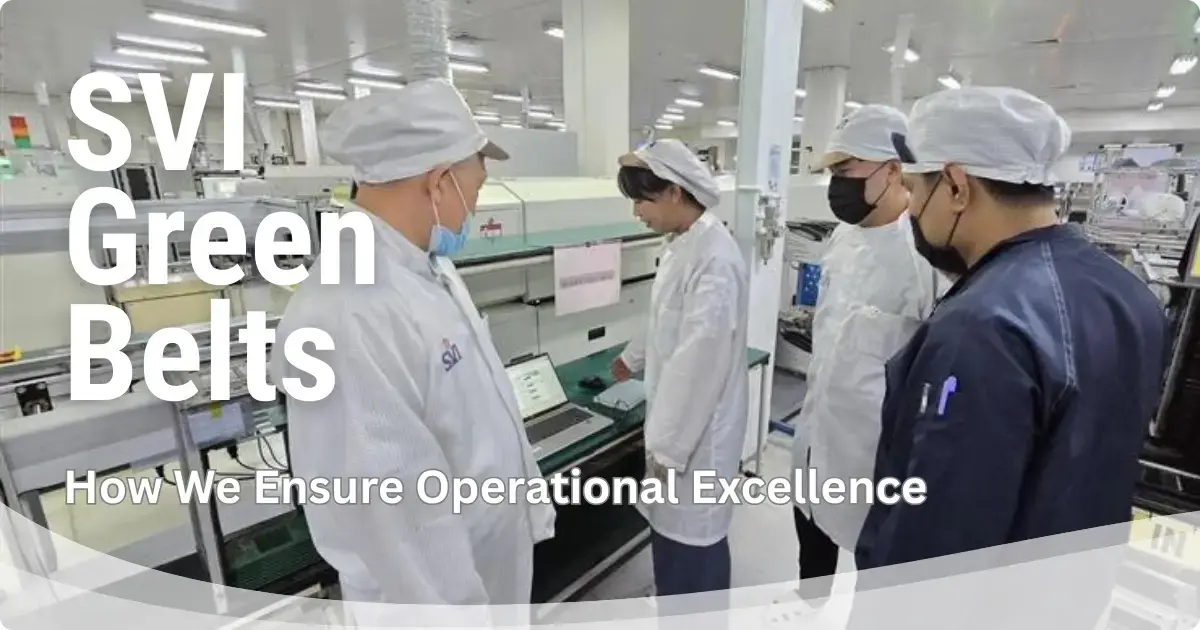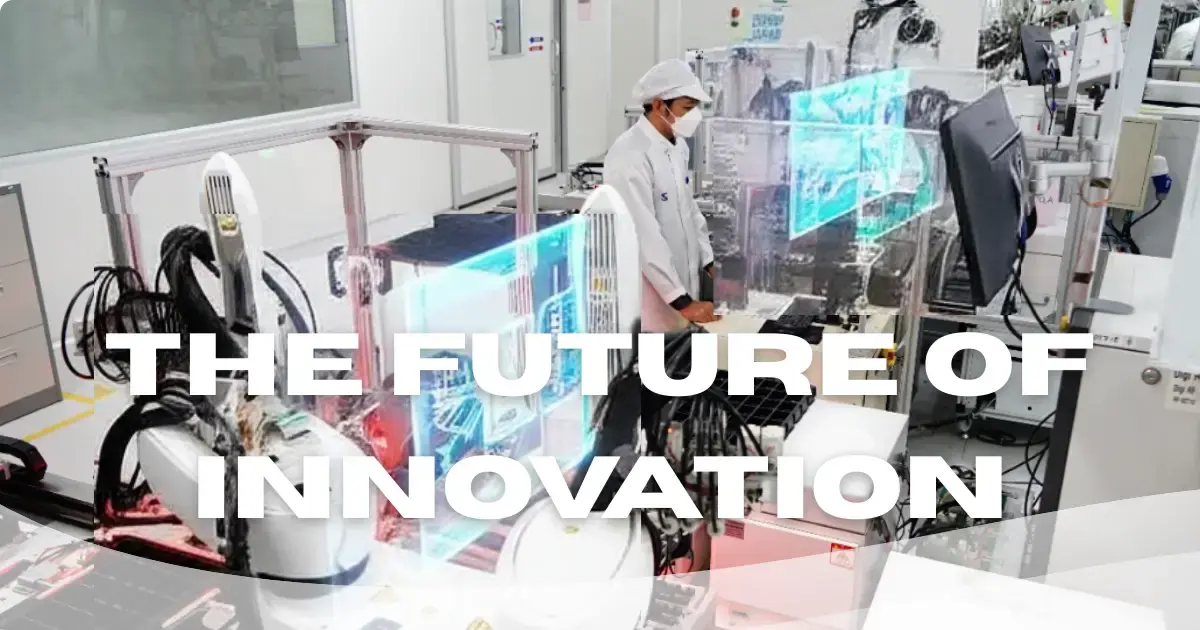
Green Belts: The Engine of Continuous Improvement at SVI
In Electronics Manufacturing Services (EMS), even the smallest variation can lead to costly delays, product defects, or supply chain disruptions. Green Belts—engineers and professionals trained in Lean Six Sigma—play a pivotal role in tackling these challenges. By applying data-driven methods, they improve yields, stabilize processes, and drive consistent quality across PCBA, box-build, and system assembly. At SVI, Green Belts are not just internal problem-solvers; they are enablers of reliability and efficiency for OEM customers worldwide.
What Are Green Belts?
Green Belts are specialists who apply Lean Six Sigma methods to improve processes within their areas of responsibility. At SVI, they are often engineers who balance daily roles with running targeted improvement projects. Their mission is clear: identify inefficiencies, reduce variation, and deliver measurable improvements that enhance performance for EMS customers.
How Green Belts Operate
Electronics manufacturing is defined by high complexity, rapid product lifecycles, and multi-site operations. Green Belts address these challenges by leading department-level projects focused on yield improvement, defect reduction, and workflow efficiency.
They work under the guidance of Black Belts, who mentor them and lead larger, cross-functional initiatives. Sponsors ensure projects align with SVI’s business priorities, while Executive provides resources and strategic direction. This structured support allows Green Belts to implement solutions that are both localized and strategically aligned—making products more reliable and supply chains more predictable for OEMs.

Tools and Methods Green Belts Use
At SVI, Green Belts employ a disciplined toolkit to uncover root causes and implement sustainable improvements. Central to their work is the DMAIC framework (Define, Measure, Analyze, Improve, Control), which ensures every project is data-driven and outcome-oriented.
They also apply:
- Kaizen and PDCA → for continuous, incremental improvements.
- Root Cause Analysis & 5 Whys → to identify and eliminate the source of problems.
- Process Mapping & Value Stream Analysis → to visualize workflows, remove bottlenecks, and optimize efficiency.
- Statistical tools and performance metrics → to validate that improvements are measurable and lasting.
 |
 |
By combining these methods with deep engineering expertise, SVI’s Green Belts deliver improvements in quality, speed, cost efficiency, and consistency across all global production sites.
Why Green Belts Matter to OEMs
Green Belt projects translate directly into customer value:
- Quality → Reduced defects and higher yields in PCBA and system builds result in more reliable products.
- Speed → Streamlined processes shorten lead times and accelerate time-to-market.
- Cost Efficiency → Waste elimination and smarter resource use reduce overall manufacturing costs.
- Consistency → Standardized methods ensure uniform quality, whether production occurs in Thailand, Slovakia, Austria, Cambodia, or the USA.
For OEMs, this means greater confidence that every product shipped by SVI meets the same high standard, regardless of where it is built.

SVI’s Lean Six Sigma Structure
Lean Six Sigma at SVI is not a stand-alone initiative but a framework embedded into the way we deliver EMS solutions. Each level plays a defined role in ensuring improvements are identified, implemented, and sustained:
- Executive Leadership → Defines long-term strategy, provides resources, and sets the culture of continuous improvement.
- Sponsors → Senior managers who champion projects, remove barriers, and ensure cross-functional collaboration.
- Black Belts → Full-time experts leading complex, multi-site initiatives, applying advanced statistical methods, and mentoring Green Belts.
- Green Belts → Engineers and department leaders focused on local improvements, using Lean Six Sigma tools to reduce waste, stabilize production, and enhance product reliability.
This tiered structure ensures Lean Six Sigma is a continuous cycle of improvement—from the executive boardroom to the production floor. For OEMs, it means operational excellence is systematically built into every product and every delivery.
Conclusion
Green Belts are a vital part of SVI’s Lean Six Sigma ecosystem. By combining structured methodologies with practical problem-solving, they turn data into measurable improvements that strengthen product quality, accelerate speed, optimize costs, and ensure consistency across our global EMS footprint.
At SVI, Continuous Improvement is more than a methodology—it is our culture. With Green Belts supported by Black Belts, Sponsors, and Executives, every improvement project is strategically aligned with OEM requirements and designed to deliver lasting value.
Looking for an EMS partner that applies Lean Six Sigma discipline to deliver superior results? Contact SVI today to learn how our Green Belts can help optimize your production outcomes.
 Supanee Nookaew
Supanee Nookaew






